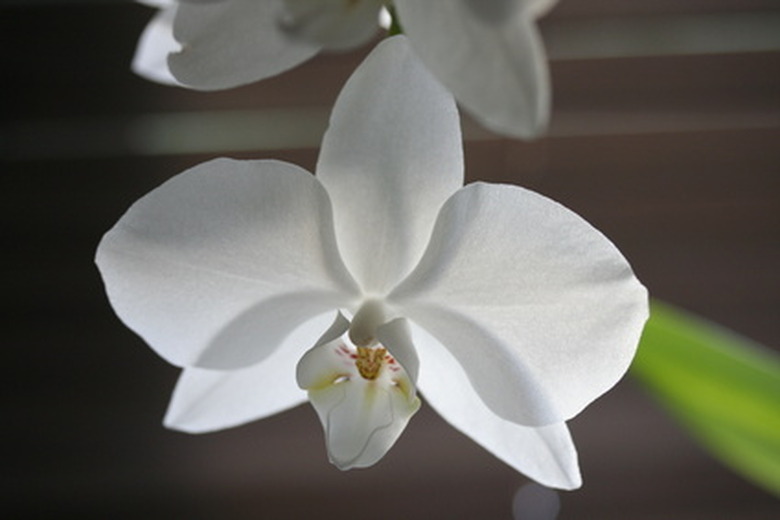How To Bring A House Plant Back To Life
Things Needed
- Rainwater or bottled water
- Humidifier
- Pot
- Premium potting soil
Keeping houseplants alive doesn't have to be difficult.To bring a dying houseplant back to life, know your plant's requirements and address any preventive care that you may be neglecting. Pay careful attention to plant tags to determine its light and other care needs. Many indoor plants thrive in humid, indirect light conditions as they originate from the tropics, advises the Purdue University Cooperative Extension Service.
Step 1
Move the plant to a location that gets a different amount of sunlight than its current spot. Most plants benefit from a good dose of sunlight, which enables them to produce their food through the process of photosynthesis. However, if the plant is receiving too much sunlight, it could burn the leaves.
Step 2
Adjust your watering schedule. If the plant's soil appears saturated, leave it alone for a few days, until it appears dry. If the plant's soil appears dry, give the plant a good drink of water with a light stream until water starts to drip from the bottom drainage holes. After that, only water the plant until the soil looks moist, not soaked. Only water on days when you can stick the tip of your finger in the soil and feel dry soil.
- Keeping houseplants alive doesn't have to be difficult.
- To bring a dying houseplant back to life, know your plant's requirements and address any preventive care that you may be neglecting.
Step 3
Water with a less chemically-altered water option. Collect rainwater outdoors in a container or use bottled water. Tap water contains chlorine and other additives that may be harmful to the plant.
Step 4
Turn on a humidifier to increase air moisture. Sometimes the air around a plant becomes too dry, especially during the winter.
Step 5
Move plants away from heat vents, warm appliances, or cold or hot drafts in your home. All can be drying or cause extreme changes in temperature for the plant. Maintain your home's temperature between 60 and 75 degrees F.
- Water with a less chemically-altered water option.
- All can be drying or cause extreme changes in temperature for the plant.
Step 6
Stop fertilizing the plant. If you have been adding fertilizer to your plant's pot, you may be over-fertilizing the plant. Holding off on fertilizer will give the plant time to rid itself of any excess.
Step 7
Repot the plant. Use a container slightly larger than its original pot. Fill the new container half full with a premium potting soil. Remove the plant from its current container, holding it at its base just above the soil. Place the plant in the new container and pour more soil on top of the plant; pack the soil gently around the roots and base of the plant. Lightly water the plant until moist.
- Stop fertilizing the plant.
- Holding off on fertilizer will give the plant time to rid itself of any excess.
